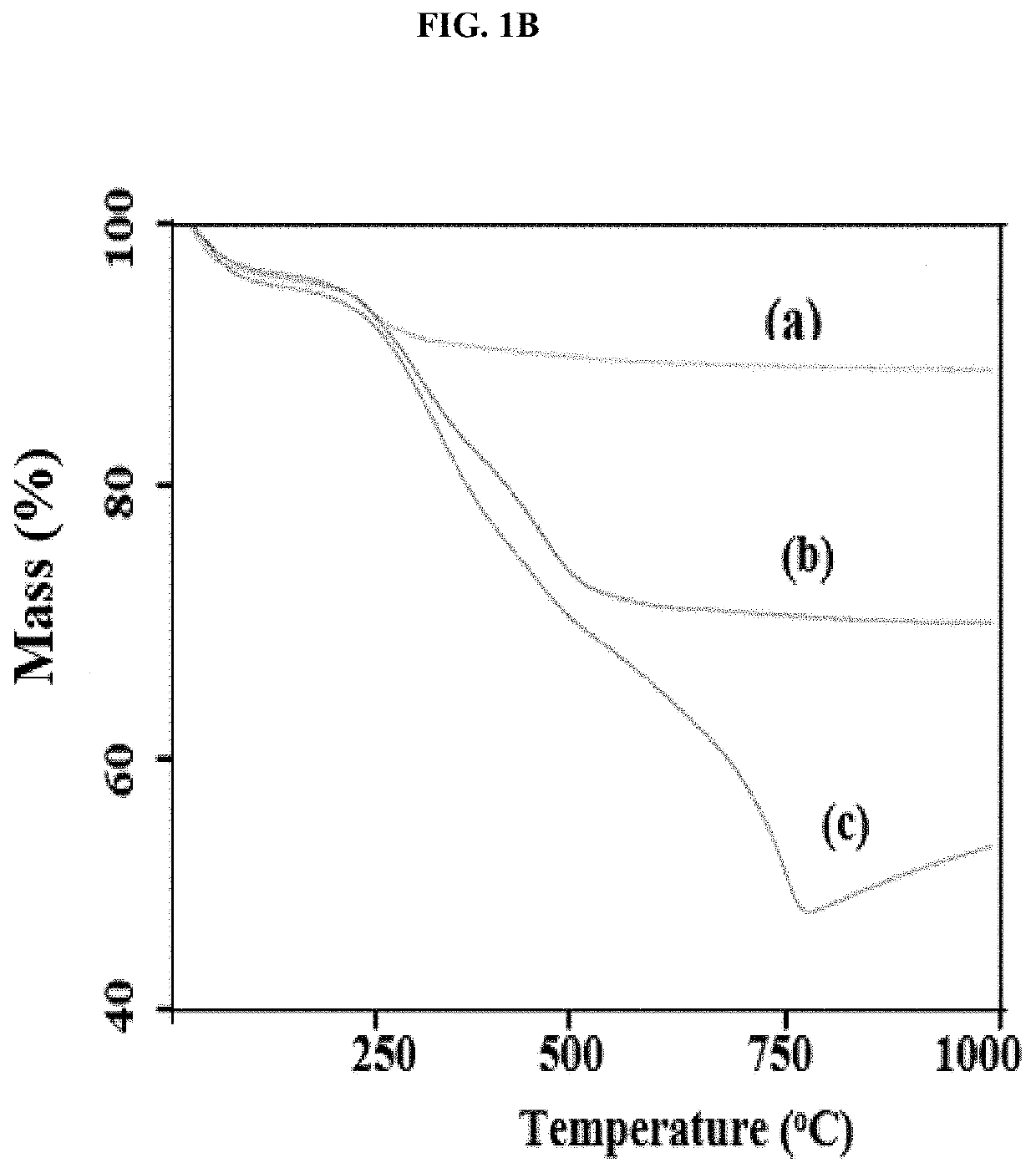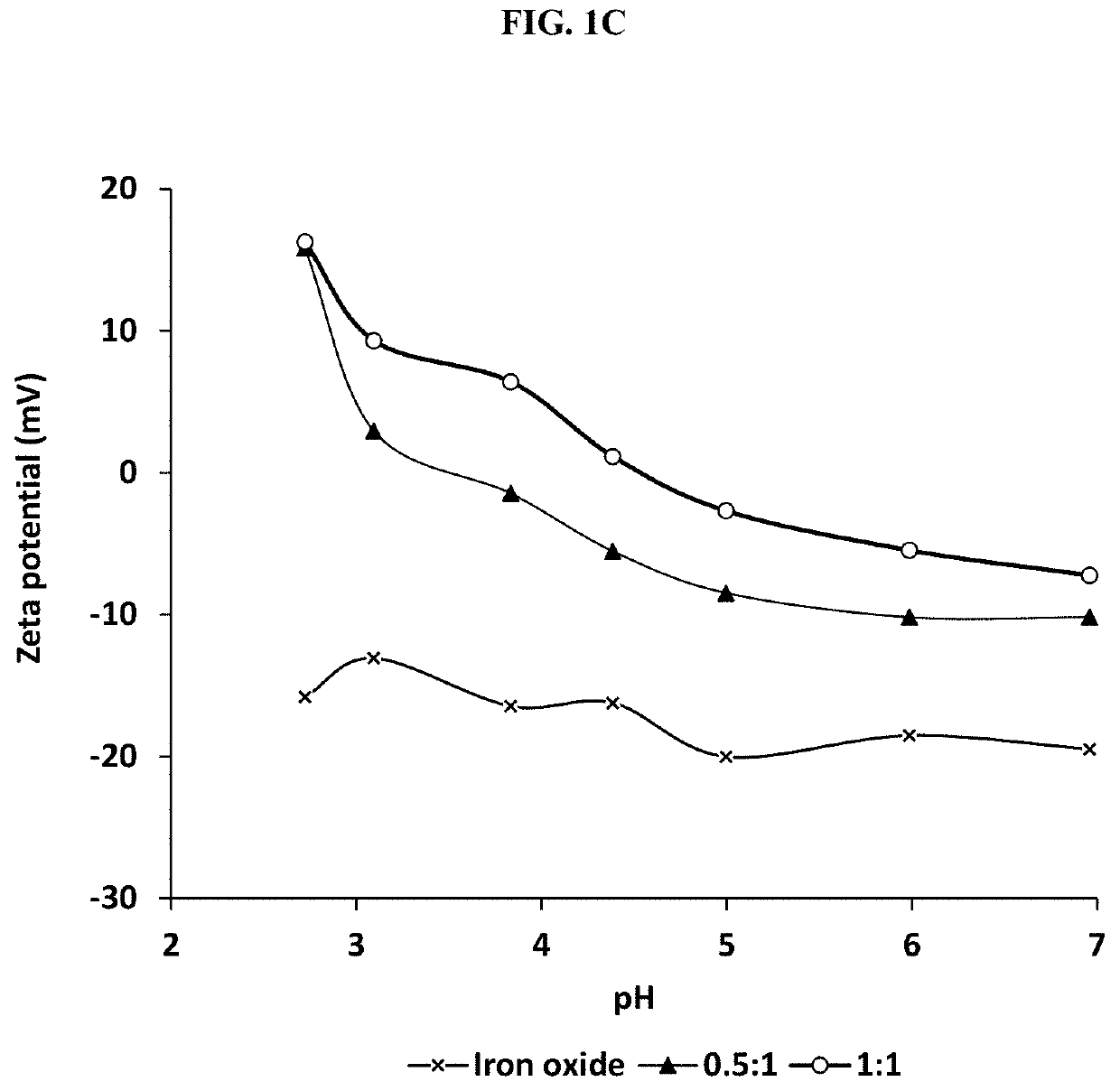Modified protein adsorbents for contaminant removal
a technology of contaminant removal and modified protein, which is applied in the direction of water/sludge/sewage treatment, chemistry apparatus and processes, other chemical processes, etc., can solve the problems of high contamination levels in wastewater and waterways, loss of significant amount of synthetic dyes (about 12%) used in manufacturing and processing operations, and high contamination levels in waterways. achieve the effects of low cost, low cost, and recovery and reusability of magnetized polypeptidylated
- Summary
- Abstract
- Description
- Claims
- Application Information
AI Technical Summary
Benefits of technology
Problems solved by technology
Method used
Image
Examples
example 1
[0046]This example illustrates an embodiment for the synthesis of a polypeptidylated hemoglobin of the invention. Dimethyl sulfoxide (assay >99.5%), bovine hemoglobin (lyophilized powder, H2625), boc-trp-N-carboxyanhydride (NCA) (assay >98, iron (II) sulfate heptahydrate, and iron (III) sulfate hydrate were all purchased from MilliporeSigma (St. Louis, Mo.) and used without further purification. NCA solution (80 mg / mL) was prepared in dimethylsulfoxide. Two different Hb concentrations, 15 and 60 mg / mL, were prepared in aqueous solution. NCA stock solution was added such that the final NCA concentration in each sample was 2.5 mg / mL. The samples were stirred at a speed of 200 rpm for 24 h using a magnetic stirrer at 4° C. to produce the inventive polypeptidylated hemoglobin at the indicated concentrations.
[0047]A polypeptidylated Hb-supported iron oxide composite (i.e., a magnetic version of the polypeptidylated hemoglobin (Polypeptidylated Hb@Fe3O4)) was also synthesized. Chemical co...
example 2
[0048]This example illustrates certain measurements and characteristics of the adsorbents produced in Example 1. These measurements provide important information about the inventive composite including the functional groups on the composite that interact with the contaminants, temperature resistance of the composite, and size distribution. FIG. 1A to 1D show FTIR spectra (1A), thermal gravimetric analysis (1B), zeta potential measurement (1C), and particle size distribution (1D) for the synthesized adsorbents. Labels (a), (b) and (c) in FIGS. 1A and 1B represent iron oxide, 0.5:1 and 1:1 inventive adsorbent, respectively. The infrared spectra of the adsorbent were measured using a Thermo Nicolet 6700 FT-IR (Thermo Electron Corporation, Madison, Wis.) spectrometer while the weight change in the material as a function of increasing temperature was studied using a TA Instruments Q500 thermal analyzer (TA Instruments, Delaware, USA). For zeta potential measurement, samples dissolved in ...
example 3
[0053]This example illustrates the stability of the adsorbent synthesized according to Example 1. To assess stability, 40 mg of the adsorbent was suspended in 20 mL of 2 different solvents (water and 0.01 M HCl) and rotated at room temperature for 2 h. The concentration of iron and hemoglobin that leached into the aqueous solution were studied using the “Iron, Phananthroline TNTplus Method” (Hach, Loveland, Colo.) and the alkaline heamatin D-575 method (see e.g., Zander et al., 1984), respectively. The adsorbents were tested for their tendency to leach into solution during the dye adsorption process. The concentration of Hb was found to be small (0.31 mg / mL). The concentration of iron under the adsorption experiment conditions (using water) all showed values less than 0.2 mg / L (see Table 3), which is an indication that the amount of iron leached into solution is less than the secondary maximum contaminant level for iron (0.3 mg / L). However, under acidic conditions (using 0.01 M HCl)...
PUM
| Property | Measurement | Unit |
|---|---|---|
| size | aaaaa | aaaaa |
| temperature | aaaaa | aaaaa |
| temperature | aaaaa | aaaaa |
Abstract
Description
Claims
Application Information
 Login to View More
Login to View More - R&D
- Intellectual Property
- Life Sciences
- Materials
- Tech Scout
- Unparalleled Data Quality
- Higher Quality Content
- 60% Fewer Hallucinations
Browse by: Latest US Patents, China's latest patents, Technical Efficacy Thesaurus, Application Domain, Technology Topic, Popular Technical Reports.
© 2025 PatSnap. All rights reserved.Legal|Privacy policy|Modern Slavery Act Transparency Statement|Sitemap|About US| Contact US: help@patsnap.com



